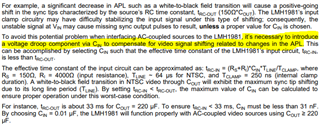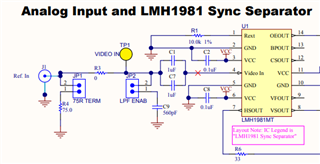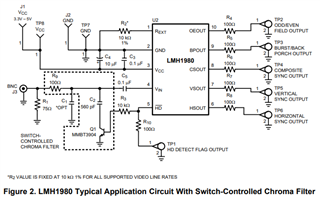Hi Team,
My customer has some technical questions regarding the LMH1983 sync stripper. They are currently experiencing occasional locking issues with certain parts, in the presence of active video. Replacing the part with another one typically resolves the issue, but they think that things may be operating on the margin.
They need to understand more about how introducing a “droop component”, at Cin, compensates for a signal that already potentially has some droop, coming from the source (due to the sources Cout):


This seems counter-intuitive. The ordinary expectation might be to make Cin larger in order to lower the pole of the effective HPF that is formed between Cin and Rin, in order to reduce the tilt of the video input signal over the course between vertical syncs/active video.
They are using a buffered input. One idea might be to include a series capacitor, along with the series resistor (highlighted), in order to ensure an affective source “Cout” that is less than the “Cin” (currently 1.0uf).
Would this make sense to you? And, could you please clarify why Cin needs to be smaller than Cout, and how that actually works?
Thanks,
Mitchell



